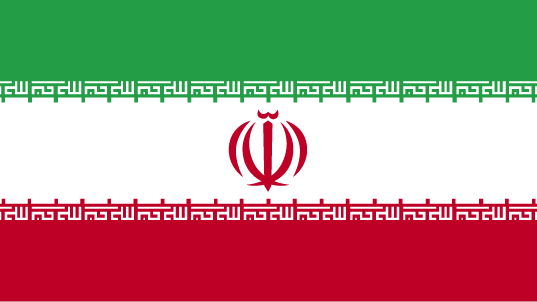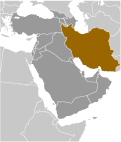
|
|
Advertisements:
People And SocietyNationality
Noun Iranian(s)
Adjective Iranian Ethnic groups
Persian 61%, Azeri 16%, Kurd 10%, Lur 6%, Baloch 2%, Arab 2%, Turkmen and Turkic tribes 2%, other 1% Languages
Persian (official) 53%, Azeri Turkic and Turkic dialects 18%, Kurdish 10%, Gilaki and Mazandarani 7%, Luri 6%, Balochi 2%, Arabic 2%, other 2% Religions
Muslim (official) 98% (Shia 89%, Sunni 9%), other (includes Zoroastrian, Jewish, Christian, and Baha'i) 2% Population World Ranking: 18
78,868,711 (July 2012 est.)
Age structure
0-14 years
24.1% (male 9,608,342/female 9,128,427) 15-64 years 70.9% (male 28,083,193/female 27,170,445) 65 years and over 5% (male 1,844,967/female 2,055,846) (2011 est.) Median age
Total 27.4 years
Male 27.1 years Female 27.6 years (2012 est.) Population growth rate World Ranking: 93
1.247% (2012 est.)
Birth rate World Ranking: 104
18.52 births/1,000 population (2012 est.) Death rate World Ranking: 166
5.94 deaths/1,000 population (July 2012 est.) Net migration rate World Ranking: 120
-0.11 migrant(s)/1,000 population (2012 est.) Urbanization
Urban population 71% of total population (2010)
Rate of urbanization 1.9% annual rate of change (2010-15 est.) Major cities - population
TEHRAN (capital) 7.19 million; Mashhad 2.592 million; Esfahan 1.704 million; Karaj 1.531 million; Tabriz 1.459 million (2009) Sex ratio
At birth 1.05 male(s)/female
Under 15 years 1.05 male(s)/female 15-64 years 1.03 male(s)/female 65 years and over 0.89 male(s)/female Total population 1.03 male(s)/female (2011 est.) Maternal mortality rate World Ranking: 135
21 deaths/100,000 live births (2010) Infant mortality rate World Ranking: 58
Total 41.11 deaths/1,000 live births
Male 41.61 deaths/1,000 live births Female 40.58 deaths/1,000 live births (2012 est.) Life expectancy at birth World Ranking: 146
Total population 70.35 years
Male 68.84 years Female 71.93 years (2012 est.) Total fertility rate World Ranking: 146
1.87 children born/woman (2012 est.) Health expenditures World Ranking: 166
3.9% of GDP (2009)
Physicians density
0.89 physicians/1,000 population (2005) Hospital bed density
1.38 beds/1,000 population (2006) Hiv/aids - adult prevalence rate World Ranking: 97
0.2% (2009 est.)
Hiv/aids - people living with hiv/aids World Ranking: 43
92,000 (2009 est.)
Hiv/aids - deaths World Ranking: 33
6,400 (2009 est.)
Major infectious diseases
Degree of risk Intermediate
Food or waterborne diseases Bacterial diarrhea Vectorborne diseases Crimean Congo hemorrhagic fever and malaria Note Highly pathogenic H5N1 avian influenza has been identified in this country; it poses a negligible risk with extremely rare cases possible among US citizens who have close contact with birds
(2009) Obesity - adult prevalence rate World Ranking: 41
14.2% (2005)
Education expenditures World Ranking: 72
4.7% of GDP (2009)
Literacy
Definition
Age 15 and over can read and write Total population 77%Male 83.5% Female 70.4% (2002 est.) School life expectancy (primary to tertiary education)
Total 13 years
Male 13 years Female 13 years (2009) Unemployment, youth ages 15-24 World Ranking: 38
Total 23%
Male 20.2% Female 34% (2008)
Comments
Add a new comment: |
Advertisement
Members area
Iran (Tehran):
 
GPS points from Iran (Tehran)
|
||||||||

 Known as Persia until 1935, Iran became an Islamic republic in 1979 after the ruling monarchy was overthrown and Shah Mohammad Reza PAHLAVI was forced into exile. Conservative clerical forces established a theocratic system of government with ultimate political authority vested in a learned religious scholar referred to commonly as the Supreme Leader who, according to the constitution, is accountable only to the Assembly of Experts - a popularly elected 86-member body of clerics. US-Iranian relations have been strained since a group of Iranian students seized the US Embassy in Tehran on 4 November 1979 and held it until 20 January 1981. During 1980-88, Iran fought a bloody, indecisive war with Iraq that eventually expanded into the Persian Gulf and led to clashes between US Navy and Iranian military forces between 1987 and 1988. Iran has been designated a state sponsor of terrorism for its activities in Lebanon and elsewhere in the world and remains subject to US, UN, and EU economic sanctions and export controls because of its continued involvement in terrorism and its nuclear weapons ambitions. Following the election of reformer Hojjat ol-Eslam Mohammad KHATAMI as president in 1997 and a reformist Majles (legislature) in 2000, a campaign to foster political reform in response to popular dissatisfaction was initiated. The movement floundered as conservative politicians, through the control of unelected institutions, prevented reform measures from being enacted and increased repressive measures. Starting with nationwide municipal elections in 2003 and continuing through Majles elections in 2004, conservatives reestablished control over Iran's elected government institutions, which culminated with the August 2005 inauguration of hardliner Mahmud AHMADI-NEJAD as president. His controversial reelection in June 2009 sparked nationwide protests over allegations of electoral fraud. The UN Security Council has passed a number of resolutions (1696 in July 2006, 1737 in December 2006, 1747 in March 2007, 1803 in March 2008, and 1835 in September 2008 and 1929 in June 2010) calling for Iran to suspend its uranium enrichment and reprocessing activities and comply with its IAEA obligations and responsibilities. Resolutions 1737, 1477, 1803 and 1929 subject a number of Iranian individuals and entities involved in Iran's nuclear and ballistic missile programs to sanctions. Additionally, several Iranian entities are subject to US sanctions under Executive Order 13382 designations for proliferation activities and EO 13224 designations for support of terrorism. In mid-February 2011, opposition activists conducted the largest antiregime rallies since December 2009, spurred by the success of uprisings in Tunisia and Egypt. Protester turnout probably was at most tens of thousands and security forces were deployed to disperse protesters. Additional protests in March 2011 failed to elicit significant participation largely because of the robust security response, although discontent still smolders.
Known as Persia until 1935, Iran became an Islamic republic in 1979 after the ruling monarchy was overthrown and Shah Mohammad Reza PAHLAVI was forced into exile. Conservative clerical forces established a theocratic system of government with ultimate political authority vested in a learned religious scholar referred to commonly as the Supreme Leader who, according to the constitution, is accountable only to the Assembly of Experts - a popularly elected 86-member body of clerics. US-Iranian relations have been strained since a group of Iranian students seized the US Embassy in Tehran on 4 November 1979 and held it until 20 January 1981. During 1980-88, Iran fought a bloody, indecisive war with Iraq that eventually expanded into the Persian Gulf and led to clashes between US Navy and Iranian military forces between 1987 and 1988. Iran has been designated a state sponsor of terrorism for its activities in Lebanon and elsewhere in the world and remains subject to US, UN, and EU economic sanctions and export controls because of its continued involvement in terrorism and its nuclear weapons ambitions. Following the election of reformer Hojjat ol-Eslam Mohammad KHATAMI as president in 1997 and a reformist Majles (legislature) in 2000, a campaign to foster political reform in response to popular dissatisfaction was initiated. The movement floundered as conservative politicians, through the control of unelected institutions, prevented reform measures from being enacted and increased repressive measures. Starting with nationwide municipal elections in 2003 and continuing through Majles elections in 2004, conservatives reestablished control over Iran's elected government institutions, which culminated with the August 2005 inauguration of hardliner Mahmud AHMADI-NEJAD as president. His controversial reelection in June 2009 sparked nationwide protests over allegations of electoral fraud. The UN Security Council has passed a number of resolutions (1696 in July 2006, 1737 in December 2006, 1747 in March 2007, 1803 in March 2008, and 1835 in September 2008 and 1929 in June 2010) calling for Iran to suspend its uranium enrichment and reprocessing activities and comply with its IAEA obligations and responsibilities. Resolutions 1737, 1477, 1803 and 1929 subject a number of Iranian individuals and entities involved in Iran's nuclear and ballistic missile programs to sanctions. Additionally, several Iranian entities are subject to US sanctions under Executive Order 13382 designations for proliferation activities and EO 13224 designations for support of terrorism. In mid-February 2011, opposition activists conducted the largest antiregime rallies since December 2009, spurred by the success of uprisings in Tunisia and Egypt. Protester turnout probably was at most tens of thousands and security forces were deployed to disperse protesters. Additional protests in March 2011 failed to elicit significant participation largely because of the robust security response, although discontent still smolders.